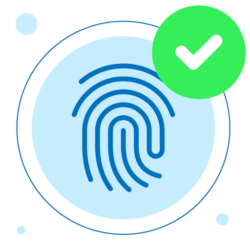Enhancing Website Security with These User Authentication Methods

As cyber threats become increasingly sophisticated, relying solely on traditional passwords for user authentication is akin to leaving your front door unlocked in a bustling metropolis. Let’s delve into the realm of enhanced website security through strong user authentication mechanisms, exploring how these methods not only fortify defenses but also foster trust between websites and their users.
User authentication has evolved from simple password-based methods to more complex systems designed to thwart unauthorized access. This evolution has been driven by the need to protect user data from an array of cyber threats, including phishing attacks, brute force attacks, and credential stuffing. In response, innovative authentication methods have been developed, ranging from biometric verification to multi-factor authentication (MFA), each offering a different level of security and user experience.
Two-factor authentication (2FA)
Two-factor authentication has emerged as a cornerstone of modern web security, adding an extra layer of protection beyond just the password. By requiring users to provide two different types of information – something they know (like a password) and something they have (like a smartphone app-generated code or a text message) – 2FA significantly reduces the risk of unauthorized access. This method has been praised for its effectiveness in protecting against account takeovers, even if a user’s password is compromised.
Biometric Authentication
Biometrics, including fingerprint scans, facial recognition, and iris scans, offer a highly secure and user-friendly method of authentication. By analyzing unique physical characteristics, biometric systems ensure that access is granted only to the genuine user. While the security benefits are clear, debates have arisen around privacy concerns and the potential for misuse of biometric data. Nonetheless, when implemented with robust data protection measures, biometric authentication stands out for its balance of security and convenience.
Multi-Factor Authentication (MFA)
Multi-factor authentication takes security a step further by combining two or more independent credentials: something the user knows (password), something the user has (security token), and something the user is (biometric verification). MFA addresses the vulnerabilities of single-factor authentication methods, offering a more dynamic defense mechanism against cyber intrusions. Despite its heightened security, MFA implementation faces challenges, including increased complexity for users and potential resistance from those who favor convenience over security.
The adoption of advanced user authentication methods is not without controversy. Critics argue that methods like 2FA and biometrics may introduce unnecessary friction, deterring users from accessing services. Furthermore, the reliance on mobile devices for 2FA codes has raised concerns about accessibility and exclusion for users without smartphones. There’s also the ever-present challenge of maintaining the balance between security and user experience, a tightrope walk that requires continuous refinement of authentication technologies.
What You Didn’t Know About Authentication Methods
- Adaptive Authentication: Many are unaware that adaptive authentication, a form of security that adjusts authentication levels based on the user’s behavior and context (like location or device), is becoming increasingly common. It dynamically balances security needs and user convenience.
- Cryptographic Tokens: Beyond common security tokens, cryptographic tokens offer a higher level of security by utilizing cryptographic techniques. These tokens, not widely discussed, ensure that the authentication process is tamper-proof and secure.
- Time-based One-time Passwords (TOTP): TOTP generates passwords that are only valid for a short period, typically 30 seconds. This method, while known in some circles, is not widely recognized for its effectiveness in preventing replay attacks.
- Push Notification Authentication: A modern method where users approve authentication requests via a push notification sent to a pre-registered device. This user-friendly approach is gaining traction but is still under the radar for many.
- Grid Cards: Grid cards are physical cards with a grid of letters and numbers used as part of a challenge-response authentication system. Users respond to challenges based on the grid, providing a physical component to digital security.
- Voice Recognition: While biometrics often focus on fingerprints and facial recognition, voice recognition is an equally powerful but less cited biometric method. It analyzes vocal patterns and can be used for accessing secure systems.
- QR Code Authentication: Users scan a QR code with a secure app to gain access, merging physical and digital security measures. This method is particularly popular in mobile banking but hasn’t gained widespread attention in other areas.
- Location-based Authentication: This method uses the geographical location of a user’s device as an authentication factor. If the access request comes from an unusual location, additional verification steps are triggered.
- Behavioral Biometrics: Beyond physical biometrics, behavioral biometrics analyze patterns in user behavior, such as typing rhythm or mouse movements, offering a subtle yet powerful security layer that’s not widely discussed.
- Continuous Authentication: This emerging method continuously monitors the user’s behavior and context to ensure the ongoing authenticity of the session. It’s a dynamic approach that moves beyond the initial login, offering persistent security that’s still gaining awareness.
Choosing the right authentication method requires a meticulous assessment of your website’s unique security landscape and an understanding of your users’ needs. Here’s a detailed breakdown of how to assess which authentication method best suits your requirements:
1. Assess Your Website’s Security Needs
- Identify Sensitive Data: Start by identifying the types of sensitive data your website handles. Does your site process financial transactions, store personal information, or manage healthcare records? The nature of the data can dictate the level of security needed.
- Evaluate Risk Factors: Consider the potential risks your website faces. This includes the likelihood of targeted attacks, the consequences of data breaches, and any regulatory compliance requirements your site must adhere to.
- Understand Your User Base: Assess the technical savviness of your users. A highly technical user base might be more receptive to advanced authentication methods, whereas a less tech-savvy audience might prioritize simplicity and ease of use.
2. Explore Authentication Methods
- Password-based Authentication: While traditional, password-based authentication may suffice for websites with minimal security needs. Ensure to implement strong password policies and consider supplementing with additional measures.
- Two-Factor Authentication (2FA): 2FA adds an extra layer of security by requiring users to provide two forms of identification. This method is suitable for websites handling moderately sensitive data.
- Multi-Factor Authentication (MFA): MFA involves two or more verification methods and is recommended for websites with high security needs. It’s particularly useful for protecting against various attack vectors.
- Biometric Authentication: For websites requiring the highest security levels, biometric authentication offers a user-friendly yet secure solution. Assess whether your users’ devices commonly support biometric capabilities.
- Behavioral Biometrics and Continuous Authentication: Consider these for highly dynamic environments where ongoing authentication can enhance security without disrupting the user experience.
3. Align Authentication Methods with User Needs
- User Experience (UX) Considerations: Balance security with convenience. Overly complex authentication methods can deter users, leading to reduced compliance and potentially lower engagement.
- Accessibility and Inclusivity: Ensure the chosen authentication method is accessible to all users, including those with disabilities. Consider the diversity of devices and technological access among your user base.
- User Education: Plan to educate your users on the importance of the chosen authentication methods. Clear communication about the benefits and usage of these security measures can foster acceptance and adherence.
4. Implement and Test
- Pilot Implementation: Before a full rollout, consider implementing the chosen authentication method with a small group of users. This allows for collecting feedback and making necessary adjustments.
- Monitor and Evaluate: After implementation, continuously monitor the effectiveness of the authentication method. Pay attention to user feedback, compliance rates, and any attempted security breaches.
- Stay Updated: The digital security landscape is continuously evolving. Stay informed about the latest developments in authentication technologies and be prepared to adapt your approach as needed.
Selecting the right authentication method for your website involves a careful evaluation of your security needs, user base, and the trade-offs between security and user experience. By aligning the chosen authentication method with these factors and committing to ongoing education and evaluation, website owners can significantly enhance their security posture while maintaining a positive user experience. Remember, the goal is not just to protect data but to do so in a way that supports and respects the needs and preferences of your users.
